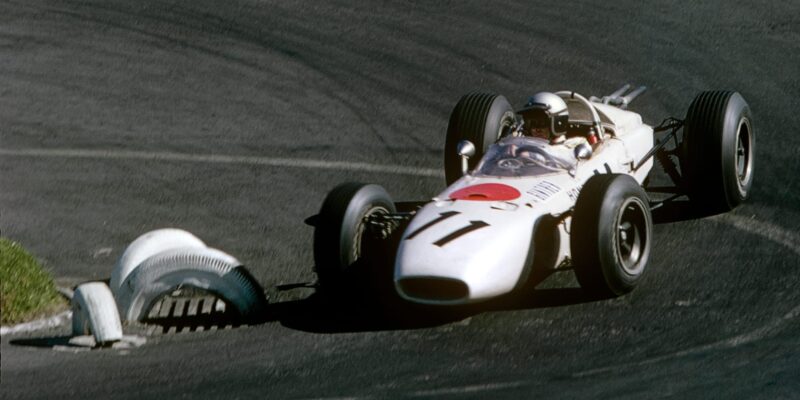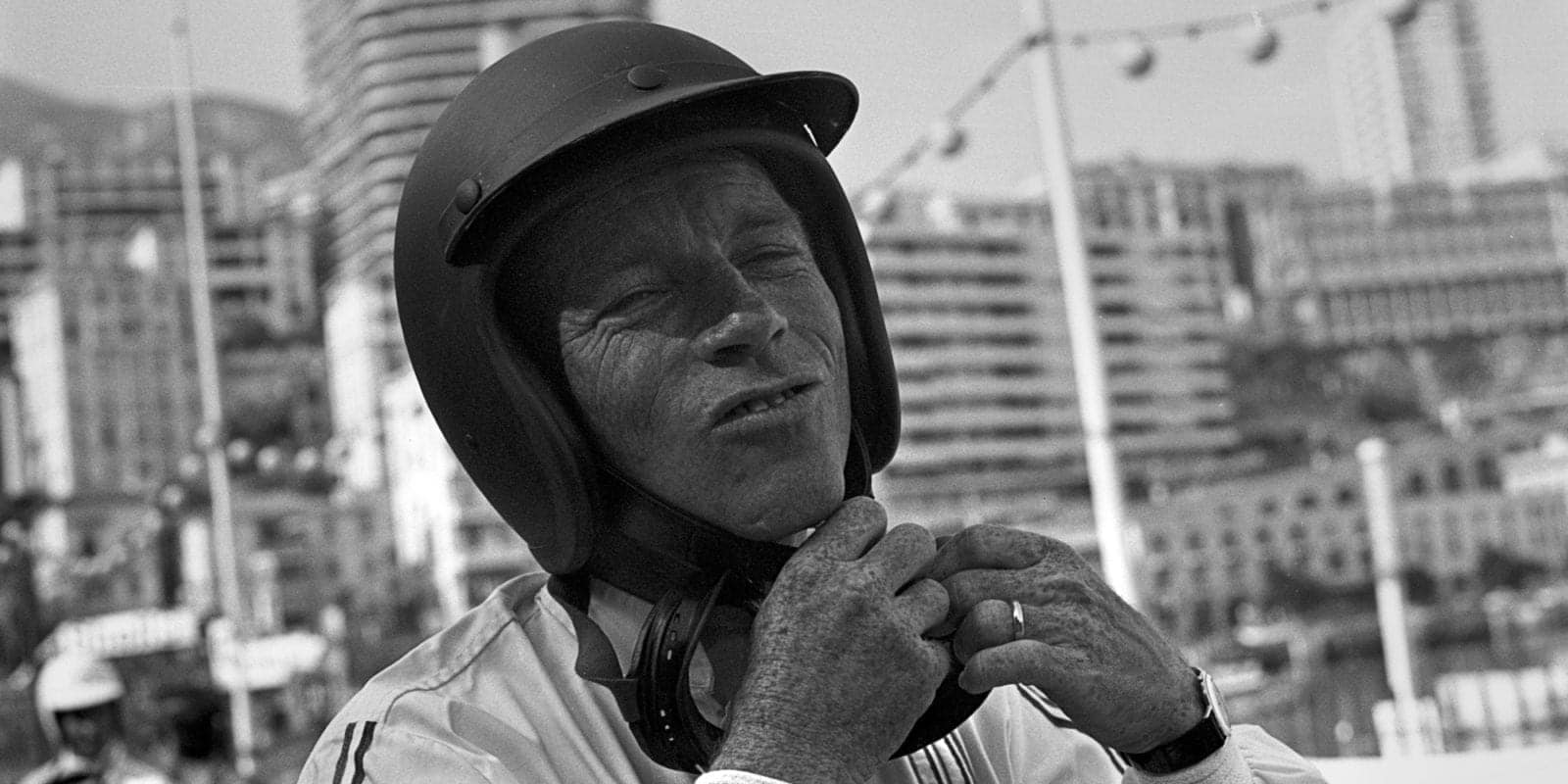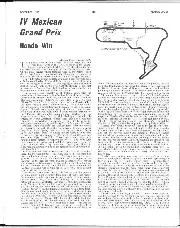On leaving the service Ginther teamed up with Hill for the 1953 Carrera Pan-Americana road race. This five-day marathon started in Tuxtla Gutiérrez, just north of the Guatemalan border, and wound northwards along poorly paved Mexican back roads. On the second day’s leg, from Pueblo to Mexico City, their 4.1-litre Ferrari rolled down a 20-foot embankment and came to rest on a bank of rocks. “Obviously we survived,” says Hill. “Richie was a good passenger but that scared the hell out of him — out of both of us.” But not enough to put off a return a year on when they finished second overall in Allen Guiberson’s Ferrari 375, just 20 seconds behind Umberto Maglioli.
In 1955 Guiberson dispatched Ginther to Europe to act as mechanic for Hill, although the fateful events at Le Mans that year meant that their Ferrari never raced outside the US. Undeterred, Richie began campaigning his own Austin-Healey while spending his evenings tending to John von Neumann’s stable of Porsches, his efforts earning him a drive at Santa Barbara in a 550 Spyder: he finished third behind Ken Miles’s ‘Flying Shingle’ MG and von Neumann.
Over the following four seasons Ginther continued to race the German cars, interspersed with outings in Joe Lubin’s 3-litre Aston Martin and John Edgar’s Ferrari Testa Rossa. A first drive at Le Mans in ’57 ended in retirement, but his talent hadn’t gone unnoticed. Two years later he was the most successful Ferrari driver in the US and was offered a works drive for 1960.
He made an immediate impression, Carlo Chiti and other Ferrari insiders recognising his technical brilliance and rewarding him with his maiden grand prix ride for Monaco, where he finished sixth in a 246P. But it would be his drive in the following year’s race that saw him truly arrive on the international stage. Armed with the new ‘Sharknose’ 156, Ginther placed himself on the front row. Once Louis Chiron dropped the flag on the Sunday he beat everyone to the hairpin, only for Stirling Moss to slip past in his Rob Walker Lotus 18 on the 14th tour. As the race stabilised Phil Hill led the Ferrari chase, but carburation problems meant Moss was getting away. On the 78th lap team manager Romolo Tavoni gave the word and Ginther was let past. He would close down Moss, both regularly dipping under their qualifying times, but neither made a mistake and the Brit ace won. Ginther’s performance in a virtually untested car (although Baghetti won at Naples on the same day in a similar one) was a revelation.
By the end of the year he was Bourne bound, BRM hoping that he would provide valuable engineering input from Ferrari. Sadly he never quite delivered. A testing accident left him badly burned and he convalesced at chief engineer Tony Rudd’s home. Though well-liked and respected, Ginther never won for British Racing Motors during his three-year spell. There were podiums in ’62 — third in the French GP and at Monza — and the following year he scored the greatest gross points haul of any American driver up to that point, with three seconds, two thirds, two fourths and a fifth, leaving him joint second (with Graham Hill) in the drivers’ table, albeit some way behind Jim Clark. Showing typical consistency, he finished every championship round in 1964 — second again at Monaco and in the Austrian GP — but slipped to fourth overall.
But it was time to move on. Honda courted him for 1965, his technical nous undoubtedly helping the fledgling marque rise to prominence. The transverse V12-powered RA272 became increasingly competitive as the season went on, culminating in Ginther’s only GP win, at Mexico City. It was also the first for Honda and Goodyear. It’s likely that had the 1.5-litre formula continued into 1966, he would have been a title favourite — the Honda was seriously quick — but the new 3-litre regulations marked the beginning of the end for the American.
He drove a Cooper-Maserati T81 in the opening rounds of the ’66 season until the RA273 was ready, but its debut at Monza ended after a tyre punctured on entering Curva Grande. He was lucky to survive, but disenchantment had already set in. Joining good friend Dan Gurney at All American Racers for ’67, he was running second behind the boss in the Race of Champions only to retire. Then followed Monaco and a shock failure to qualify. Entered in the Indy 500, he abruptly chose to walk away although not, as has often been recorded, because he didn’t make the cut. Gurney: “He decided to step out of the car during practice. Indianapolis wasn’t his cup of tea: it had a very intimidating aspect to it in those days before wings. AAR’s other driver Jerry Grant got in the same car and was up to speed very quickly.”

Ginther on the way to his only GP victory in Mexico
Bernard Cahier/Getty Images
Not that Ginther was completely done with motorsport. “He had a racing team and Porsche speed equipment business in Los Angeles, funded by Johnny von Neumann,” recalls Gurney. Running 911s for Alan Johnson and Milt Minter, his équipe notched up several victories in the American Road Race of Champions series. He would also oversee Jo Siffert’s Can-Am effort with the 917 before giving Elliott Forbes-Robinson a leg-up in Super Vee. Then he quit for good.
So what prompted, him to drop out? Phil Hill is unsure: “About the time he stopped driving, I was busy getting married and starting a family. He was busy getting a divorce. We had a falling out so I didn’t stay in touch with him much after that.”
Gurney: “We stayed friends and had contact off and on in the ’70s before he became a kind of recluse. There were some personal and possibly health problems, I think.”
In later years he married again, relocating to San Diego, and seemed settled; but he died suddenly in mid-September 1989, a few weeks after a BRM reunion at Donington. He was barely 59. “I was shocked to learn of his death in France,” says Gurney. “His former wife Jackie passed away a few years ago here in Southern California. His son (Brett) became a doctor.”
During his early career Ginther is often pictured smiling beatifically. Later on, anything but. Did his time in Europe change him? “I don’t think it changed his personality,” claims Gurney. “He, like the rest of us, was serious when it counted but happy about his accomplishments with Ferrari and Honda.”
Hill concurs: “Richie was a nice, easy-going kid who became more serious once he got into Formula One. He wanted to project himself as being professional, so I suppose he became more assertive as time went on. Having said that, he was never shy about speaking his mind.”
So, Richie Ginther; one-hit wonder turned hippy. Not much of an epitaph. You could argue that he was unlucky not to win more races. Hill: “No more than the rest of us! I think it’s a bit unfair that he didn’t win more. It’s hard to say. He was certainly an underrated driver. He was a very good test driver and his technical knowledge helped him as a racer.” Gurney: “Of course he was unlucky! Except the one he won in Mexico with me coming second in the Brabham!”


